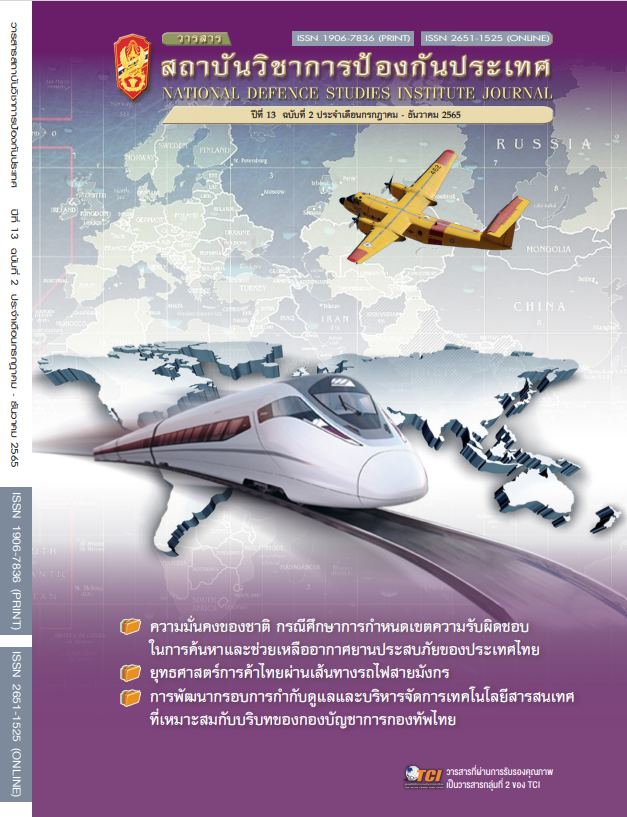Thailand’s Trade Strategy via the China’s Railway
Main Article Content
Abstract
This article is intended to present policy recommendations or Thailand’s trade strategy via the China-Laos railway. Since this railway was initiated from China’s policy that focuses on the development of both domestic and foreign trade. In addition, China wants to create a diversified market for imported products that do not want to rely too much on the imports of one country. Protection of agro-industry to prevent excessive importation of certain products from abroad, and promote the export of quality products and value-added products, as well as promoting trade with neighboring countries and expanding markets to emerging markets. And, as new forms of trade such as Cross-Border e-Commerce (CBEC). Importantly, China promotes road transportation and high-speed railway that are more connected to neighboring countries to facilitate the transportation of passengers and goods between countries. All of these are both opportunities and challenges for Thailand which must be expedited to take advantage. Together with monitoring opportunities, and challenges to reducing risks from the impacts of China’s railway.
Article Details

This work is licensed under a Creative Commons Attribution-NonCommercial-NoDerivatives 4.0 International License.
The articles, images, tables, graphs, written content, and opinions published in this journal are solely those of the authors and do not necessarily reflect the views or positions of the National Defence Studies Institute or its academic affiliates.
References
สนิท ปิ่นสกุล, ปรีดา พิชยาพันธ์, เจษฎา โพธิ์จันทร์, และปุริม ศรีสวัสดิ์. (2564). รายงานการวิจัย โครงการย่อยที่ 3 การศึกษาระบบโครงสร้างพื้นฐานและสิ่งอำนวยความสะดวกรองรับการขนส่งต่อเนื่องหลายรูปแบบที่เชื่อมโยงประเทศไทยกับกลุ่มประเทศภาคีภายใต้ยุทธศาสตร์เส้นทางสายไหมในศตวรรษที่ 21. กรุงเทพฯ: สำนักงานการวิจัยแห่งชาติ.
สำนักงานสภาพัฒนาการเศรษฐกิจและสังคมแห่งชาติ. (2562). การพัฒนาท่าเรือบก. จดหมายข่าวกองยุทธศาสตร์ การพัฒนาระบบโลจิสติกส์, 2(4), 4-7.
Asian Development Bank. (2021). The 14th Five-Year Plan of the People’s Republic of China—Fostering High-Quality Development. Manila: Asian Development Bank.
DHL International. (2021). New high-speed railway puts Laos on track to boost regional trade. Retrieved from https://lot.dhl.com/high-speed-railway-laos-boost-regional-trade/
Feng, F., Zhang, T., Liu, C., & Fan, L. (2020). China Railway Express Subsidy Model Based on Game Theory under “the Belt and Road” Initiative. Sustainability, 12(2083), 1-16.
Green Finance & Development Center. (2022). Countries of the Belt and Road Initiative (BRI). Retrieved September 6, 2022, from https://greenfdc.org/countries-of-the-belt-and-road-initiative-bri
Khonkhlong, S. (2022). High-Speed Rail Diplomacy as Connectivity for the Belt and Road Initiative and its Potential Implication for Thailand. Thai Journal of East Asian Studies, 26(1), 14-39.
National Development and Reform Commission People’s Republic of China. (2022). THE 14TH FIVE-YEAR PLAN-Chapter 3 Major Objectives. Retrieved September 6, 2022, from https://en.ndrc.gov.cn/policies/202203/P020220315511411039433.pdf


